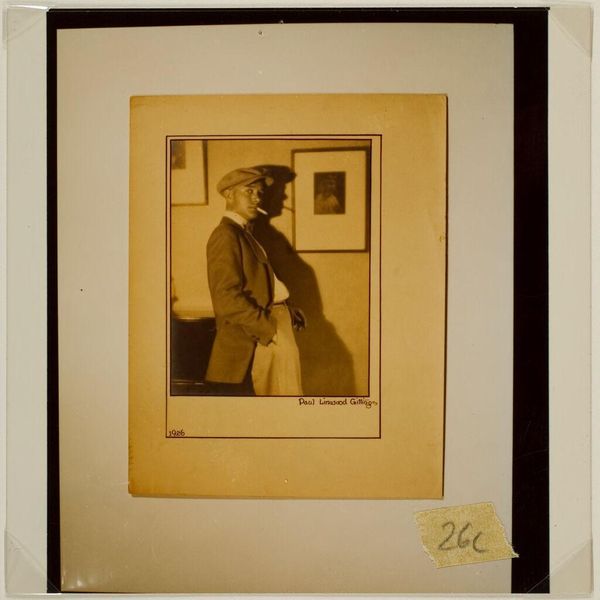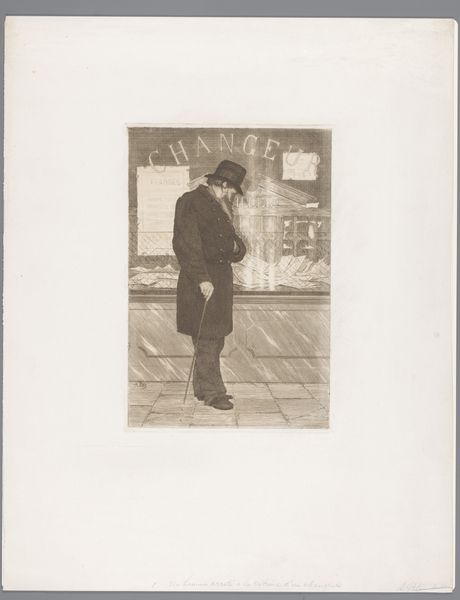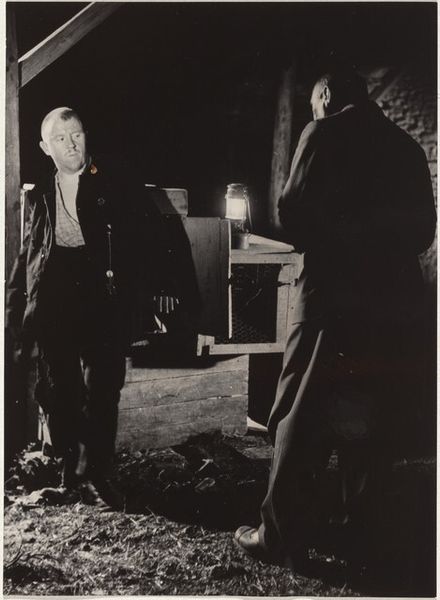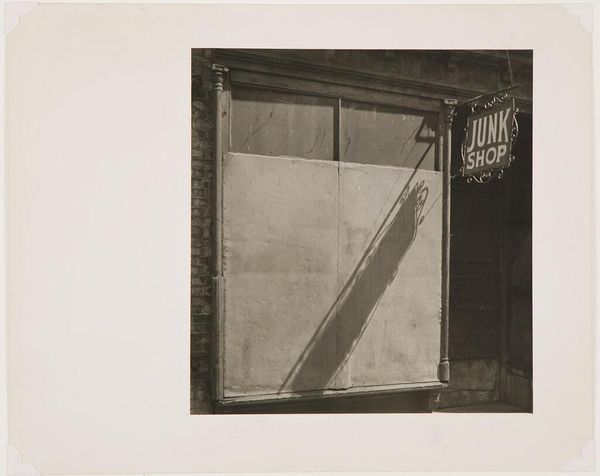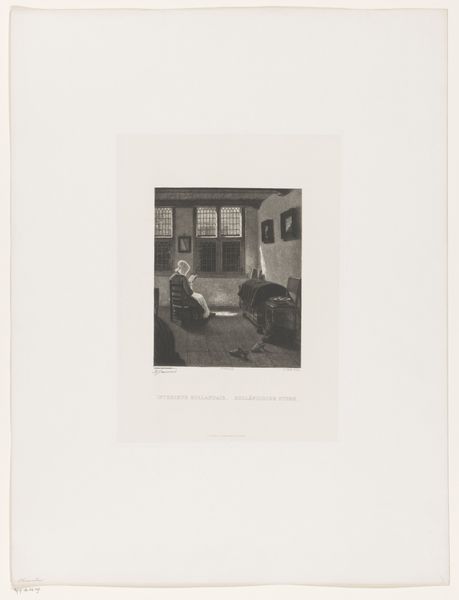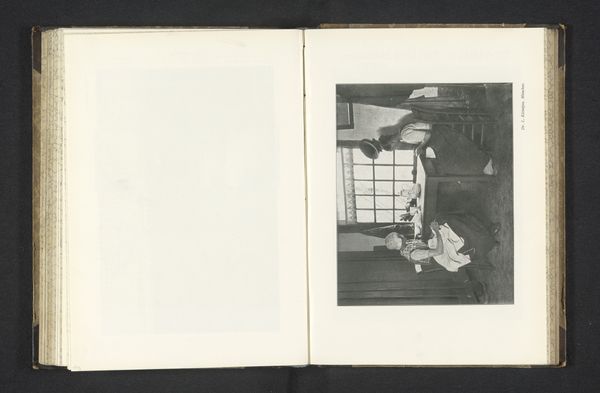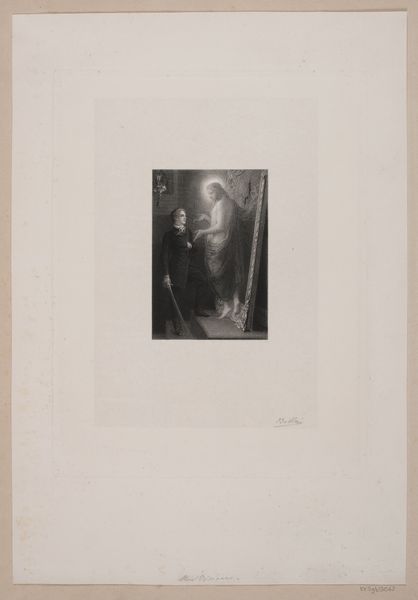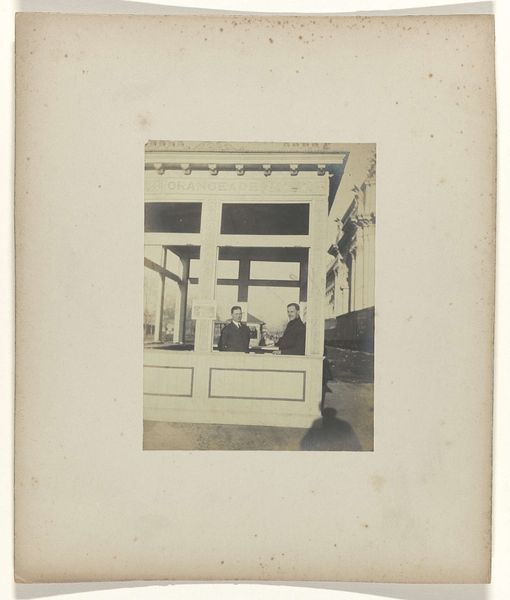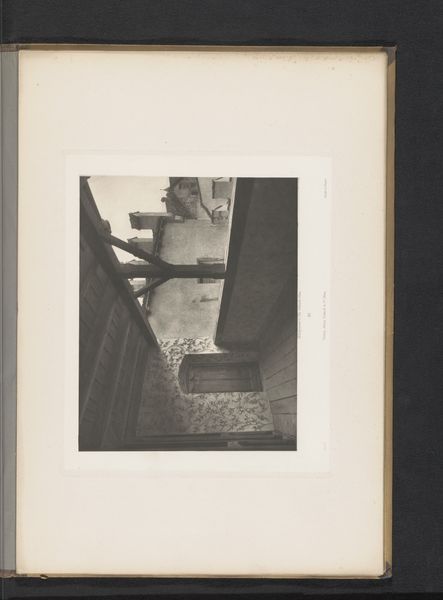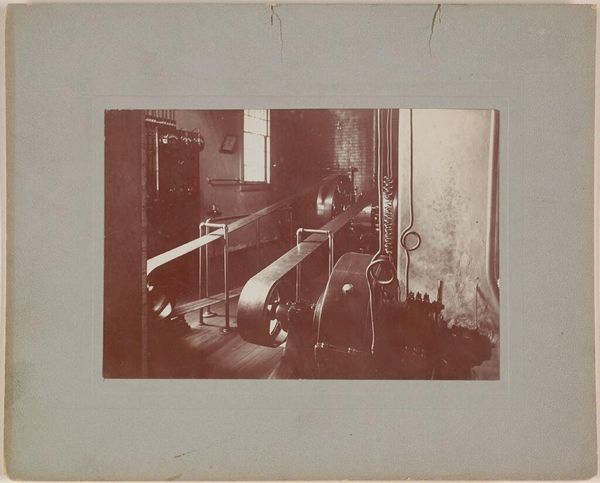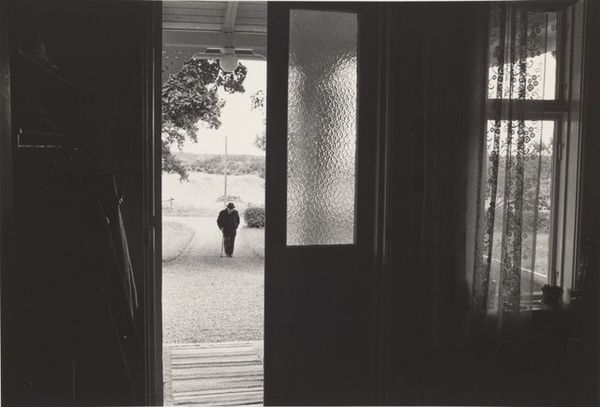
photography, gelatin-silver-print
#
portrait
#
street-photography
#
photography
#
gelatin-silver-print
#
modernism
#
realism
Dimensions: height 152 mm, width 203 mm, height 455 mm, width 354 mm
Copyright: Rijks Museum: Open Domain
Curator: Luke Swank’s gelatin-silver print, “Man in a Doorway, Seen from a Car,” created around 1934 and residing here at the Rijksmuseum, captures a scene of everyday life in America with a striking composition. What are your immediate impressions? Editor: It feels clandestine, like a stolen glance. The muted tones and the framing through the car window create a sense of voyeurism. He's obscured, almost a phantom figure in the doorway. Curator: Absolutely. The "doorway" is so suggestive here. Doors function symbolically as passages or thresholds—liminal spaces marking transitions between distinct worlds. Editor: I can see that. This isn’t just a physical entryway. The contrast between the darkness engulfing the man and the light falling on the stoop… it creates an intriguing sense of vulnerability. Is this man seeking shelter, or is he about to step out into the world? And that doorway also suggests class and status as well: a man framed by an entryway that isn't his. Curator: Precisely. Given the era, the Depression era, one must also consider the sociopolitical climate. How does this composition underscore prevalent societal anxieties concerning wealth and class? Is he entering or leaving that more modest room to the left of him, obscured behind those draped cloths. His suit makes me believe he has lost more. The angle implicates the artist, perhaps as part of the ownership class. Editor: You know, I’m drawn to those ornate details around the doorway, contrasting sharply with the simplicity—almost poverty—of the window nearby. The door suggests cultural aspirations in competition with more everyday scenes in America. It is as if that status the door once afforded has waned in some way... Curator: Yes, the image invites us to consider themes of marginality. Swank often documented the gritty realities of working-class life. "Man in a Doorway, Seen from a Car" encapsulates that beautifully. I wonder where that car was headed or has been... This piece feels unresolved in so many meaningful ways. Editor: It’s that ambiguity, the man suspended in this threshold, that lingers. I am left grappling with questions about identity, about social mobility, and ultimately about our roles as viewers peering into someone else's existence.
Comments
rijksmuseum about 2 years ago
⋮
After Swank died at a fairly young age in 1944 his negatives and prints remained in private ownership and were unseen for years. consequently, Swank was far less known than contemporaries such as Walker Evans or Dorothea Lange. The cropping of the man in a doorway was unusual in the 1930s, and gave rise to a daring composition.
Join the conversation
Join millions of artists and users on Artera today and experience the ultimate creative platform.
